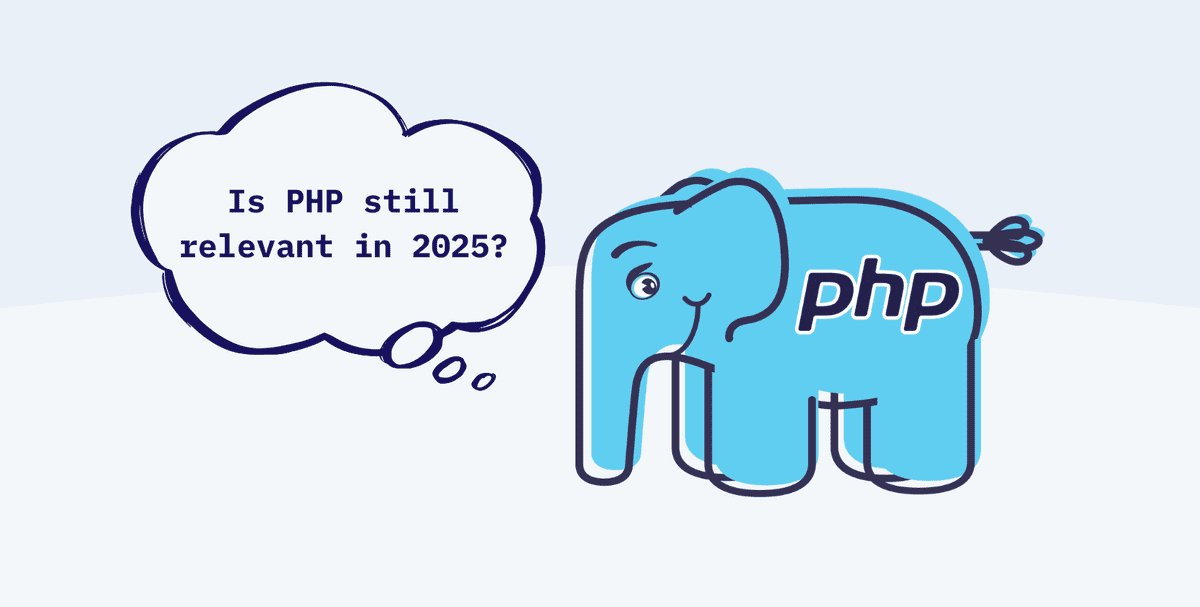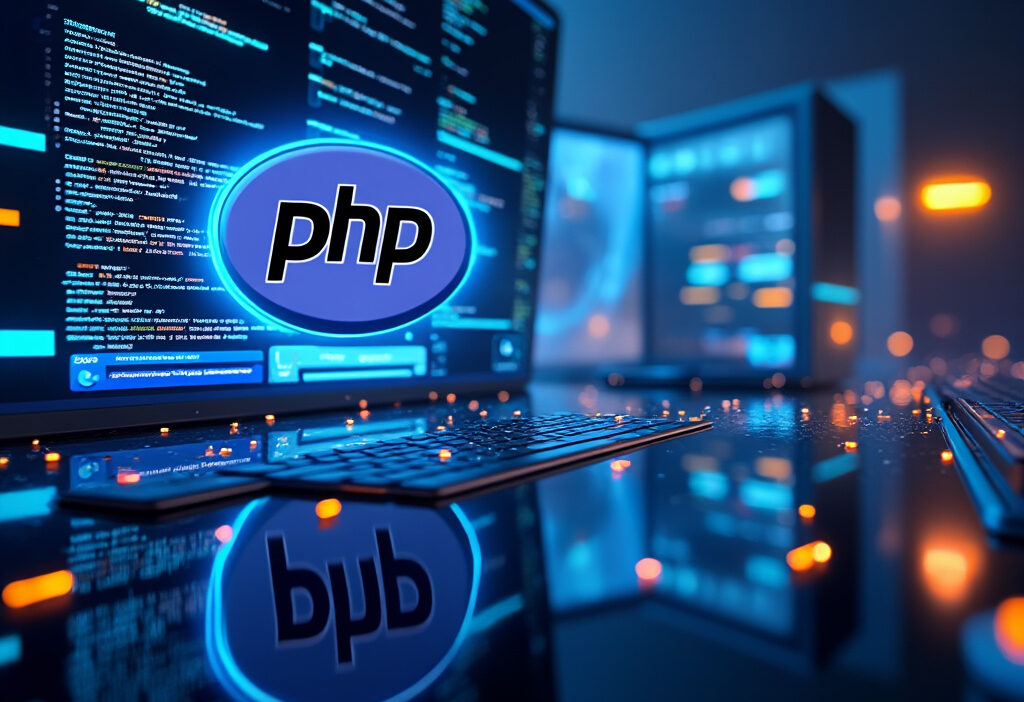PHP in 2025 Why It’s Still Relevant in the Age of JavaScript & Python
In the ever-evolving world of web development, PHP continues to hold its ground against the rising popularity of JavaScript and Python. This article delves into why PHP remains a crucial tool for developers in 2025, exploring its adaptability, community support, and the unique advantages it offers in modern web development scenarios.
The Evolution of PHP
PHP, initially created in 1994 by Rasmus Lerdorf, began as a simple tool for managing personal homepages. Over the years, it evolved into a full-fledged server-side scripting language, powering some of the web’s most popular platforms, including WordPress, Facebook, and Wikipedia. The release of PHP 5 in 2004 marked a turning point, introducing robust object-oriented programming (OOP) capabilities, which allowed developers to build more complex and scalable applications. However, it was PHP 7, launched in 2015, that truly revolutionized the language. With significant performance improvements, reduced memory usage, and the introduction of strict typing, PHP 7 bridged the gap between legacy code and modern development practices.
In 2025, PHP continues to thrive, thanks to its adaptability and community-driven evolution. The release of PHP 8.x brought features like Just-In-Time (JIT) compilation, union types, and attributes, further enhancing its performance and developer experience. Frameworks like Laravel and Symfony have solidified PHP’s position in modern web development, offering tools for building RESTful APIs, microservices, and real-time applications. PHP’s ability to integrate seamlessly with databases, particularly MySQL, and its compatibility with cloud platforms ensure its relevance in a tech landscape dominated by JavaScript and Python. By embracing modern paradigms while maintaining backward compatibility, PHP remains a versatile choice for developers tackling both legacy systems and cutting-edge projects.
PHP vs JavaScript A Comparative Analysis
PHP and JavaScript, though both integral to web development, serve distinct purposes and excel in different scenarios. PHP, a server-side scripting language, is designed for backend development, while JavaScript, traditionally a client-side language, has expanded its reach with Node.js to handle server-side tasks as well. In terms of performance, PHP is optimized for server-side rendering and database interactions, making it a natural choice for content-heavy websites like WordPress or e-commerce platforms. JavaScript, on the other hand, shines in real-time applications and single-page applications (SPAs) due to its asynchronous capabilities and event-driven architecture.
When it comes to ease of use, PHP’s simplicity and straightforward syntax make it accessible for beginners, especially for those building dynamic web pages. JavaScript, while versatile, has a steeper learning curve due to its extensive ecosystem and frameworks like React and Angular. However, JavaScript’s ability to unify frontend and backend development under one language is a significant advantage for full-stack developers.
In application areas, PHP remains dominant in traditional web development, particularly for CMS-driven sites and legacy systems. JavaScript, with its Node.js runtime, is preferred for modern, scalable applications requiring real-time data processing, such as chat apps or streaming platforms. While JavaScript’s versatility is undeniable, PHP’s reliability and maturity in backend development ensure its continued relevance in 2025.
PHP vs Python The Battle for Backend Supremacy
In the battle for backend supremacy, PHP and Python stand as two of the most prominent contenders, each with its own set of strengths and weaknesses. PHP, with its roots deeply embedded in web development, continues to excel in scenarios where rapid deployment and scalability are paramount. Its seamless integration with databases like MySQL and its extensive support for content management systems such as WordPress make it a go-to choice for web-centric applications. PHP’s performance has also seen significant improvements with the introduction of JIT compilation in PHP 8, narrowing the gap with Python in terms of speed.
Python, on the other hand, is celebrated for its versatility and readability, making it a favorite for complex backend systems, data analysis, and machine learning. Its extensive libraries, such as Django and Flask, provide robust frameworks for building scalable web applications. However, Python’s performance can sometimes lag behind PHP in high-traffic scenarios, especially when dealing with synchronous tasks.
The choice between PHP and Python often boils down to the nature of the project. PHP shines in traditional web development and CMS-driven sites, while Python is often preferred for data-intensive applications and AI-driven solutions. Both languages have their niches, and their continued evolution ensures they remain relevant in the ever-changing tech landscape.
The PHP Community and Ecosystem
The PHP community and ecosystem have been pivotal in ensuring the language’s continued relevance in 2025. Despite the rise of JavaScript and Python, PHP’s vibrant community has fostered innovation and adaptability. Forums like Stack Overflow and PHP.net remain bustling hubs where developers exchange ideas, troubleshoot issues, and share best practices. These platforms have democratized knowledge, making PHP accessible to both beginners and seasoned developers.
Conferences such as PHP[World] and Laracon have also played a crucial role in keeping PHP at the forefront of web development. These events not only showcase the latest advancements but also provide a space for networking and collaboration. The sense of camaraderie within the PHP community has been instrumental in driving the language forward.
Open-source projects have been the backbone of PHP’s evolution. Frameworks like Laravel and Symfony, which will be explored in the next chapter, owe their success to the contributions of countless developers. These projects have not only enhanced PHP’s capabilities but also ensured its adaptability to modern web development needs. The collaborative spirit of the PHP community continues to be its greatest strength, ensuring its relevance in an ever-changing tech landscape.
Modern PHP Frameworks and Tools
In 2025, PHP continues to thrive, thanks in large part to its modern frameworks like Laravel and Symfony, which have redefined the language’s capabilities and appeal. These frameworks have addressed many of PHP’s historical criticisms, such as lack of structure and scalability, by introducing robust tools and conventions that streamline development. Laravel, for instance, has become synonymous with elegant syntax, powerful features like Eloquent ORM, and a vibrant ecosystem of packages. Its focus on developer experience has made it a favorite for building everything from small startups to enterprise-level applications.
Symfony, on the other hand, is celebrated for its modularity and flexibility, making it ideal for complex, large-scale projects. Its reusable components are widely adopted, even outside the PHP ecosystem, showcasing PHP’s adaptability. Both frameworks have embraced modern development practices, such as dependency injection, RESTful APIs, and real-time capabilities, ensuring PHP remains competitive with JavaScript and Python.
Moreover, tools like Composer for dependency management and PHPStan for static analysis have further elevated PHP’s standing. These advancements, combined with the frameworks’ active communities, ensure PHP remains a compelling choice for contemporary web development, bridging the gap between legacy systems and cutting-edge technologies.
PHP in Content Management Systems
PHP has long been the backbone of many popular Content Management Systems (CMS), and its role in this domain remains pivotal in 2025. Platforms like WordPress and Drupal continue to dominate the CMS landscape, powering millions of websites worldwide. PHP’s flexibility and ease of integration make it an ideal choice for CMS development, enabling developers to create highly customizable and scalable solutions. Its ability to seamlessly integrate with databases, third-party APIs, and other technologies ensures that PHP-based CMS platforms can adapt to evolving web standards and user demands.
One of PHP’s strengths in CMS development lies in its simplicity. Unlike more complex languages, PHP allows developers to quickly build and deploy features, making it accessible for both beginners and seasoned professionals. Additionally, PHP’s extensive library support and community-driven ecosystem provide a wealth of plugins, themes, and extensions, further enhancing its utility in CMS environments.
Moreover, PHP’s compatibility with modern frameworks, as discussed in the previous chapter, ensures that CMS platforms can leverage advanced features like caching, routing, and templating. This synergy between PHP and frameworks like Laravel and Symfony has elevated the capabilities of CMS platforms, making them more robust and secure. As we transition to the next chapter, it’s clear that PHP’s role in CMS development is not just enduring but also evolving, setting the stage for a deeper exploration of its security features.
Security Features in PHP
In 2025, PHP continues to stand out as a robust language for web development, particularly due to its enhanced security features. Over the years, PHP has evolved significantly to address modern security challenges, making it a reliable choice for developers. The language now includes built-in functions and libraries designed to mitigate common vulnerabilities such as SQL injection, cross-site scripting (XSS), and cross-site request forgery (CSRF). For instance, PHP’s PDO (PHP Data Objects) extension ensures secure database interactions by using prepared statements, effectively preventing SQL injection attacks.
Additionally, PHP has embraced modern security practices like password hashing with functions such as password_hash() and password_verify(), which simplify the implementation of secure password storage. The language also supports HTTPS enforcement and Content Security Policy (CSP) headers, further safeguarding web applications. Frameworks like Laravel and Symfony have further elevated PHP’s security by integrating features such as CSRF tokens, input validation, and rate limiting. These advancements ensure that PHP remains a secure foundation for building scalable and resilient web applications, even as the tech landscape continues to evolve.
Performance Optimization in PHP
Performance optimization in PHP remains a critical focus for developers, especially as applications grow in complexity and user demand increases. In 2025, PHP continues to offer robust tools and techniques to ensure applications run efficiently, even in the face of competition from JavaScript and Python. Caching is one of the most effective strategies, with solutions like OPcache and Memcached reducing server load by storing precompiled script bytecode and frequently accessed data. Implementing proper caching layers can drastically cut down response times and improve scalability.
Database optimization is another key area. PHP developers leverage tools like query profiling and indexing to minimize latency. Using prepared statements and optimizing database schemas ensures efficient data retrieval and storage. Additionally, connection pooling and database replication help distribute load and maintain performance under heavy traffic.
Code efficiency is equally important. Writing clean, modular, and well-structured code reduces execution time and memory usage. Techniques like lazy loading, minimizing global variables, and avoiding redundant computations contribute to faster performance. Tools like PHPStan and Psalm help identify inefficiencies early in the development cycle. By combining these strategies, PHP applications in 2025 remain competitive, delivering high performance while maintaining security and scalability.
The Future of PHP Emerging Trends
As we look ahead to 2025, PHP continues to demonstrate its resilience and adaptability in a tech landscape dominated by JavaScript and Python. Emerging trends suggest that PHP will evolve to meet the demands of modern web development, leveraging advancements in asynchronous programming, microservices architecture, and AI-driven development tools. The rise of frameworks like Laravel and Symfony has already pushed PHP toward more modular and scalable solutions, and this trend is expected to accelerate. PHP 8.x and beyond are likely to introduce features that enhance performance, such as just-in-time (JIT) compilation optimizations and improved support for concurrent processing, making it competitive with languages like Node.js.
Additionally, PHP is poised to integrate more seamlessly with cloud-native technologies and serverless computing, enabling developers to build lightweight, high-performance applications. The language’s compatibility with modern databases, including NoSQL and graph databases, will further solidify its role in data-intensive applications. Moreover, the growing adoption of AI and machine learning libraries within PHP ecosystems will empower developers to create smarter, more dynamic web solutions.
By embracing these trends, PHP will remain a robust choice for developers, balancing its legacy strengths with cutting-edge innovations to stay relevant in the ever-evolving tech world.
Why PHP Remains a Top Choice for Developers
In 2025, PHP remains a top choice for developers due to its unparalleled adaptability, extensive libraries, and robust community support. While newer languages like JavaScript and Python dominate headlines, PHP’s ability to evolve with the times ensures its continued relevance. Its adaptability is evident in its seamless integration with modern technologies, such as containerization, microservices, and serverless architectures. PHP frameworks like Laravel and Symfony have embraced these trends, offering developers tools to build scalable, high-performance applications that meet contemporary demands.
PHP’s extensive library ecosystem is another key factor in its enduring popularity. With tools like Composer, developers can easily manage dependencies and leverage thousands of pre-built packages, significantly reducing development time. This ecosystem is complemented by PHP’s strong community, which actively contributes to its growth. From forums and open-source projects to regular updates and security patches, the community ensures PHP remains secure, efficient, and future-proof.
Moreover, PHP’s simplicity and low barrier to entry make it accessible to developers of all skill levels. Its ability to handle both small-scale projects and enterprise-level applications ensures it remains a versatile choice. In a tech landscape dominated by rapid change, PHP’s stability and adaptability make it a reliable cornerstone for developers worldwide.

Conclusions
As we look towards the future, PHP stands as a testament to the enduring power of adaptability and community in the tech world. Despite the rise of JavaScript and Python, PHP’s unique strengths ensure its continued relevance in web development. Its evolution, robust frameworks, and vibrant ecosystem make it an indispensable tool for developers navigating the complexities of modern web applications.



